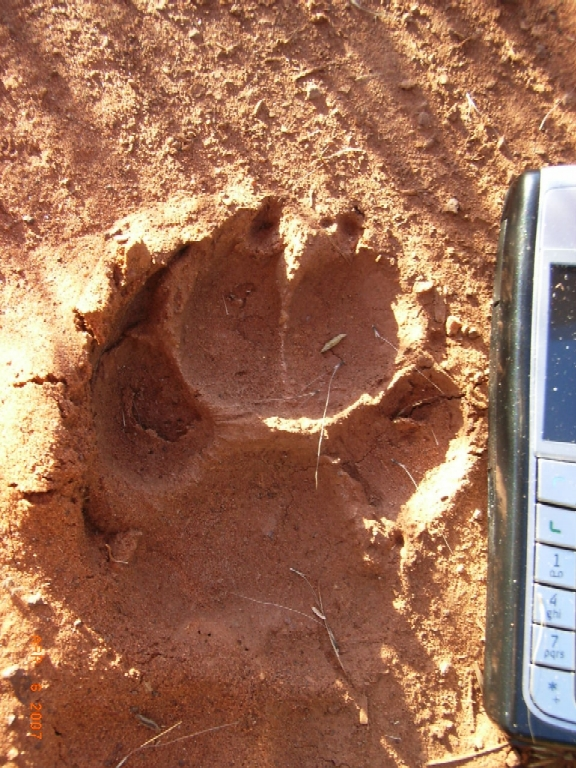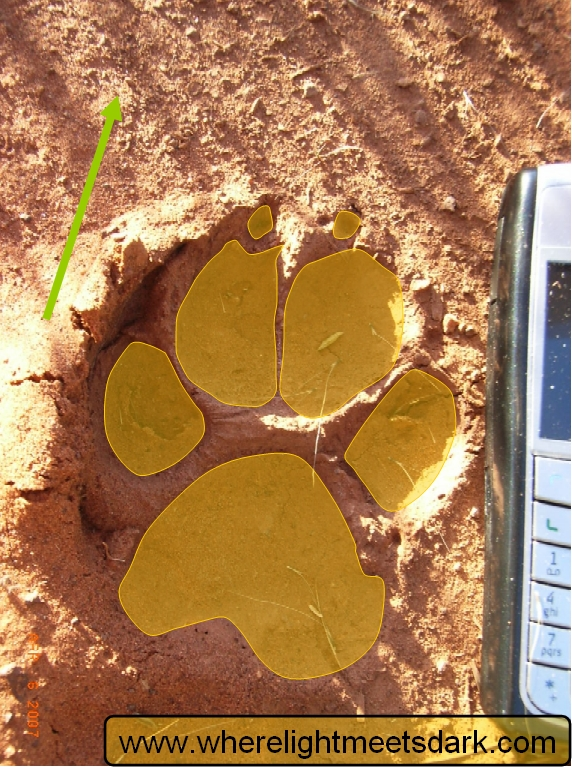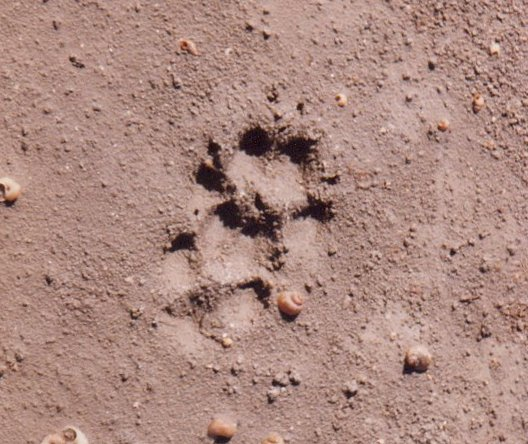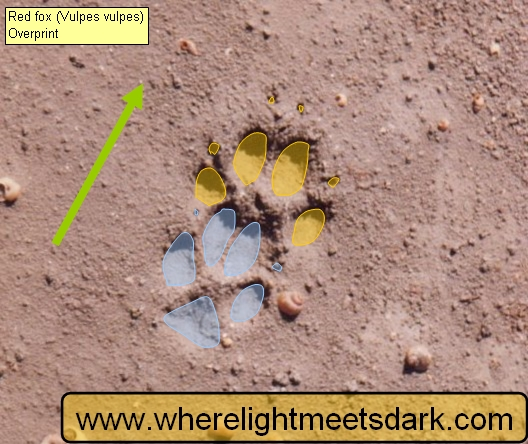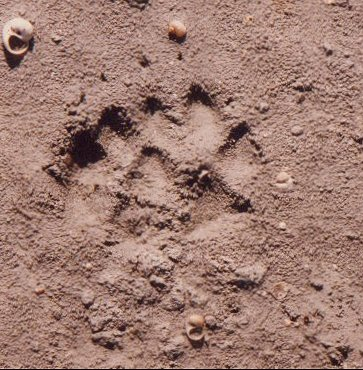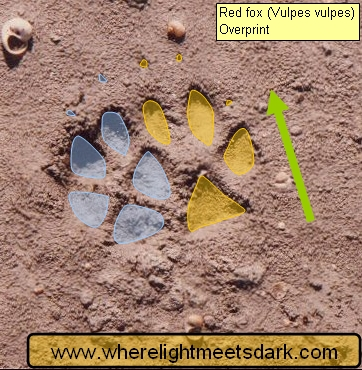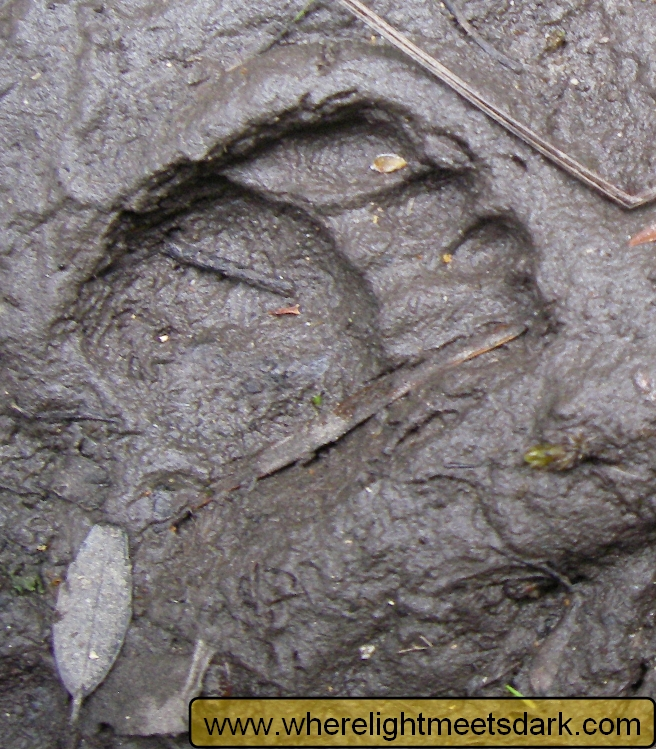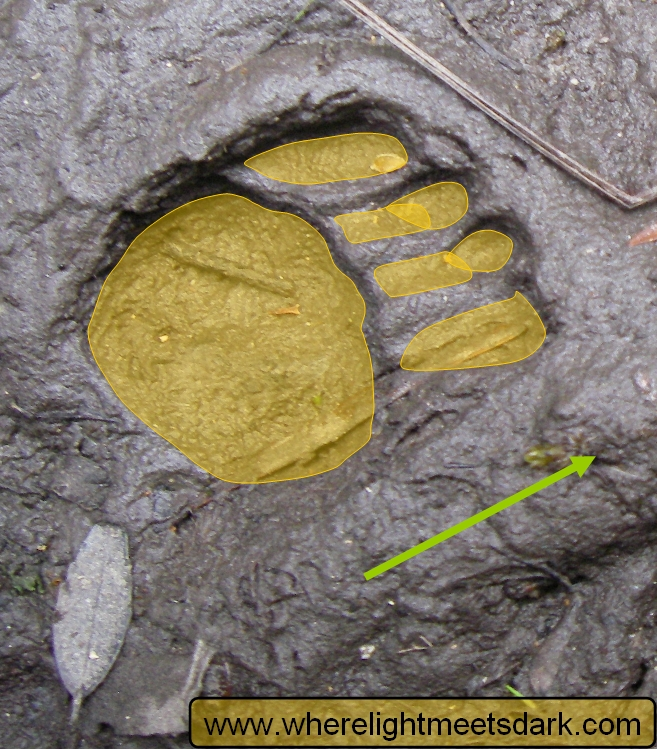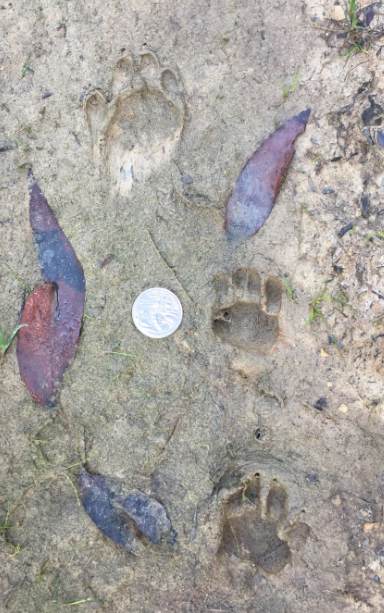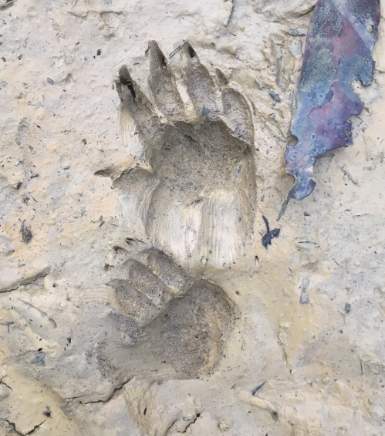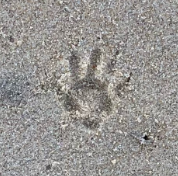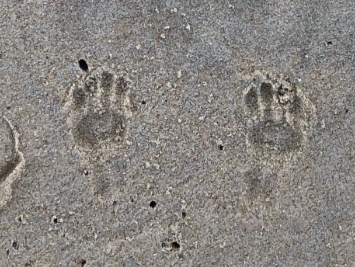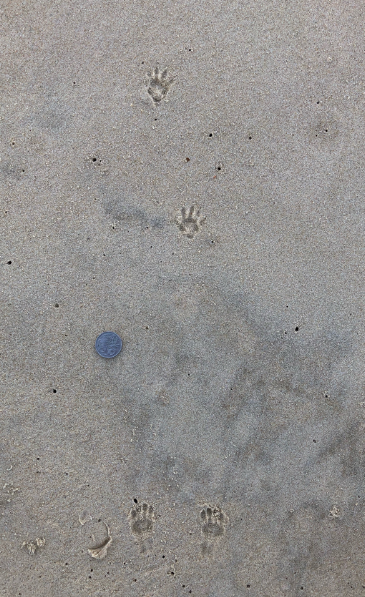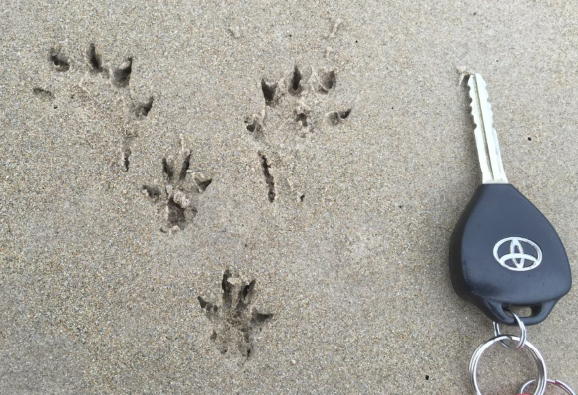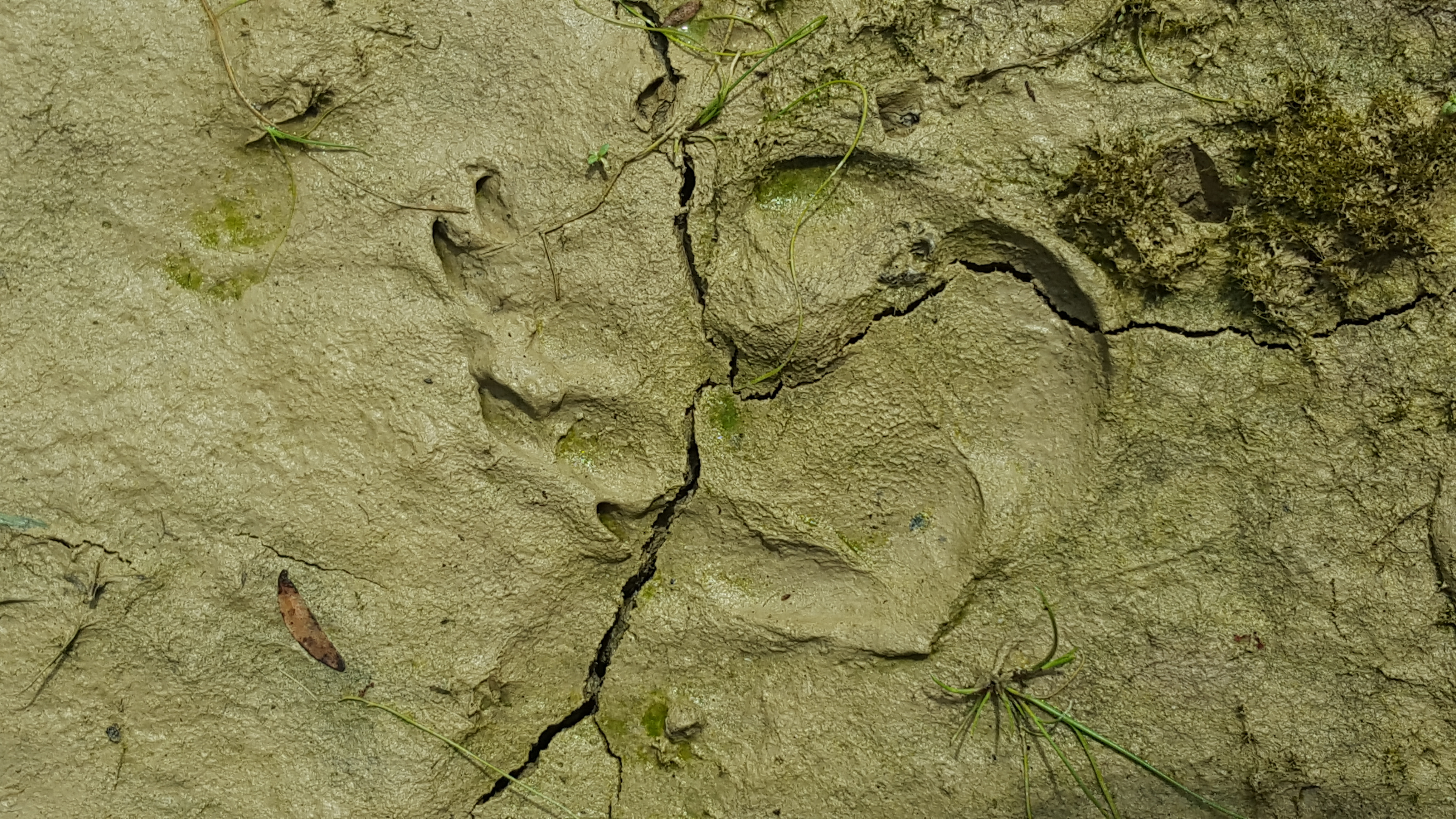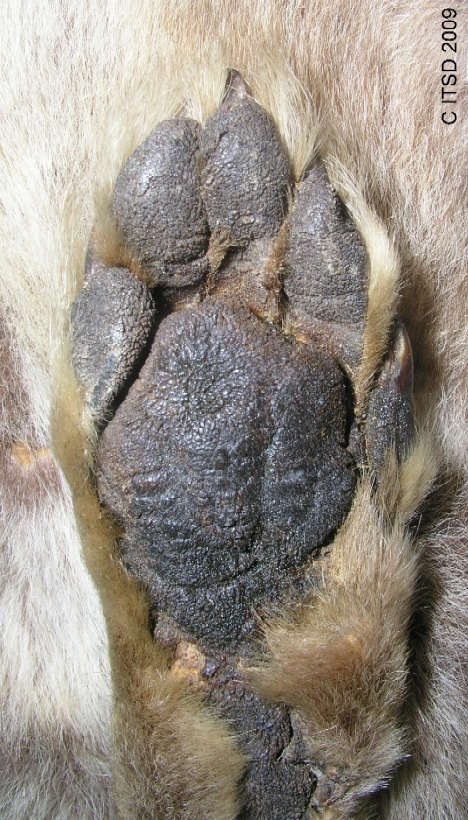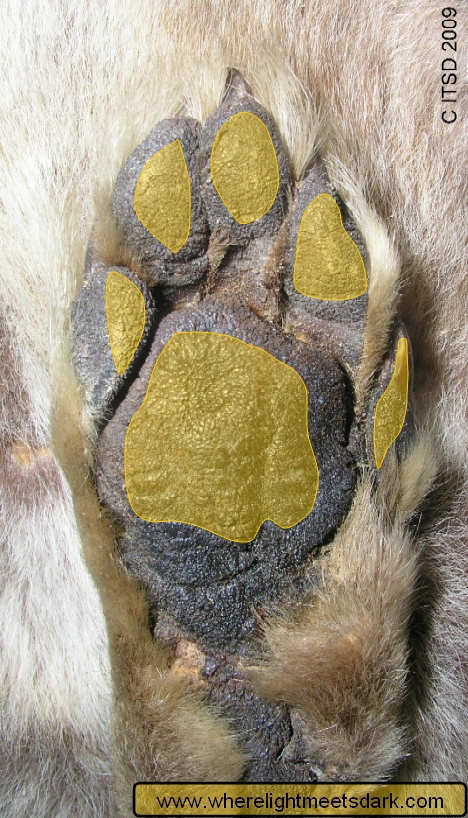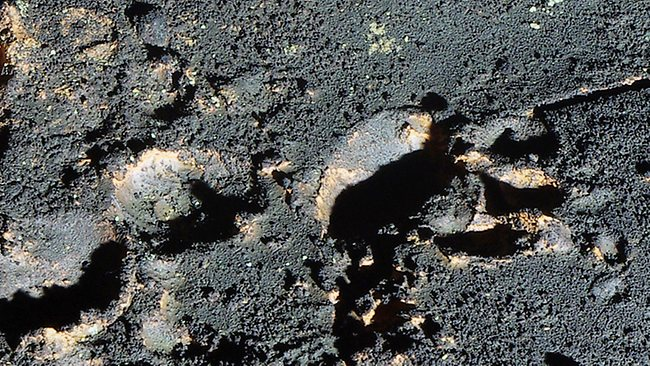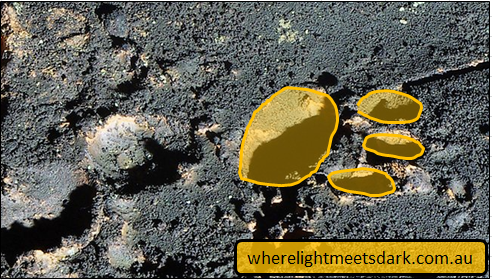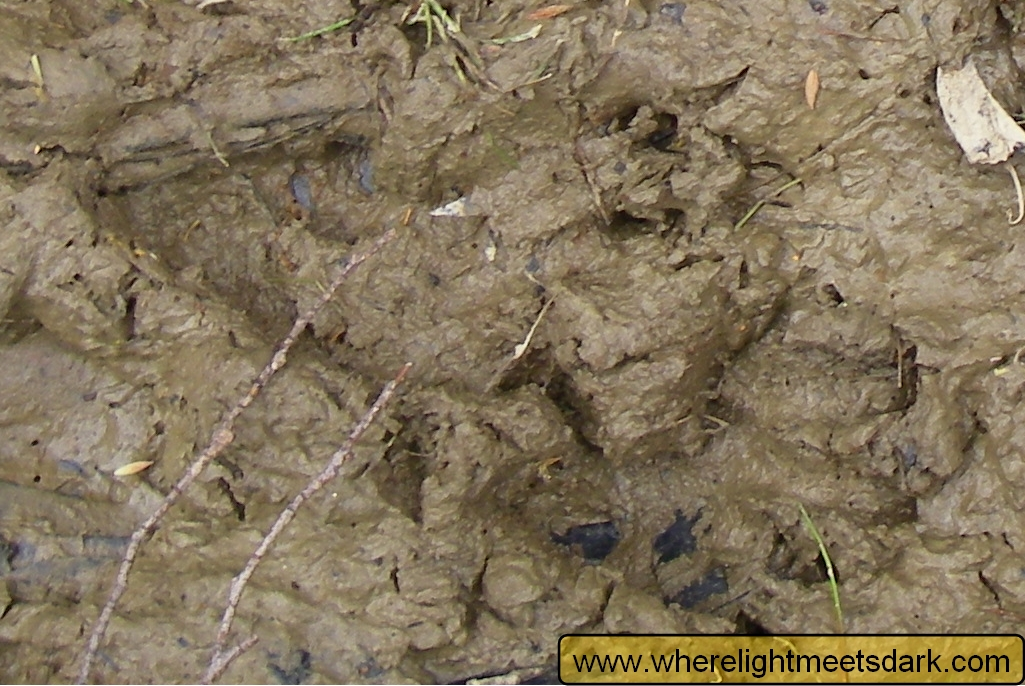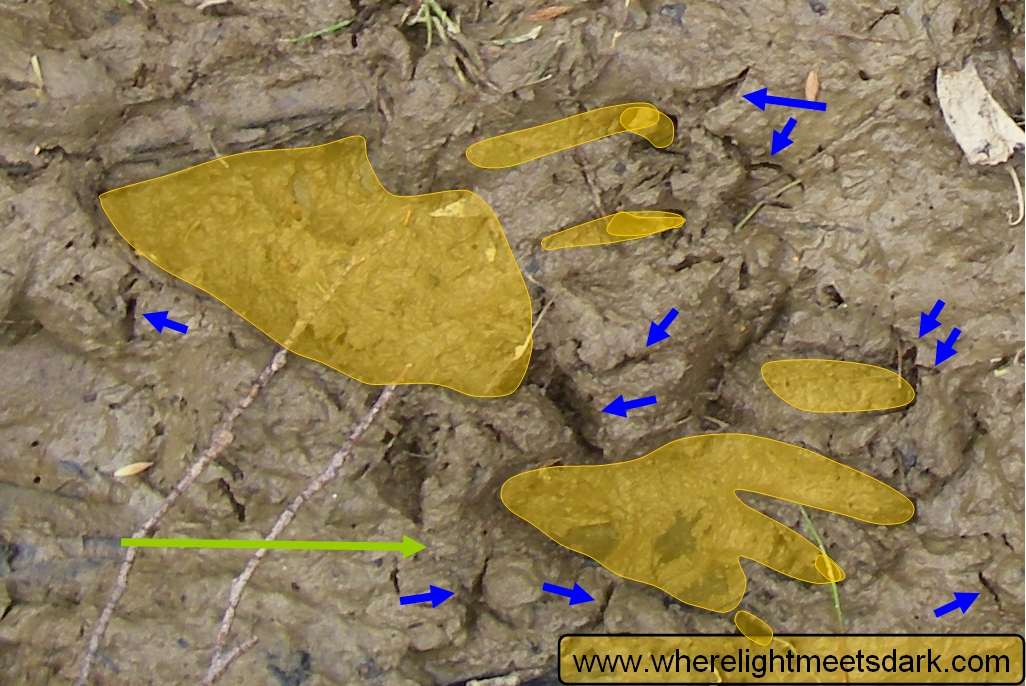Animal tracks library
Slow loading page! (but you get lots of high resolution photos for it! Support me be sending me your pics)
Introduction
The Animal Tracks Library catalogues photographs of Australian animal tracks, gaits, signs, scats and footprints.
I welcome submissions, corrections and challenges to my interpretations!
The overlays are approximate and based solely on the photographs, not on "expected" print patterns.
Mammals
Canidae (dogs and relatives)
Dingo (Canis lupus dingo, assumed) (single print in sand)
Photo: Klaus Emmerichs
Source: personal communication, 2007.
We both assumed this was a dingo, albeit a large one. Although it looks as if there is a fifth digit on the left side of the image, this is more likely due to a stone or other artefact in the substrate.
Being a subspecies of domestic dog, the dingo's dew claw is placed high on the foot and shouldn't really leave an impression in the footprint.
Unlike domestic dogs, the dew claw is absent on the dingo's hind feet.
Red fox (Vulpes vulpes, assumed) (overprints in sand)
Photo: Ray
Source: http://thylacoleo.proboards.com/index.cgi?board=general&action=display&thread=1520
This is a good example of an "overprint". This is where the hind footprint is placed over the forefoot print. If you look carefully you can just see the claw marks ahead of the digits.
Photo: Ray
Source: http://thylacoleo.proboards.com/index.cgi?board=general&action=display&thread=1520
Here the overprint can be seen again, together with claw marks.
Dasyuridae (Tasmanian devil; quolls)
Tasmanian devil (Sarcophilus harrisii, assumed) (hind print in mud)
Photo: Chris Rehberg
Source: WLMD
Devil hind foot prints are very squarish in shape. This is a very typical example. Note the plantar pad is square, but so too the toes (considered all together) form a rectangular unit, and the whole print is also squarish. Finally, the toes are not splayed, but all of them together match the width of the plantar pad.
Photo: David Hamilton
Source: Supplied.
In this image, part of a devil track line can be seen.
Spotted-tailed Quoll (Dasyurus maculatus)
Photo: David Hamilton
Source: Supplied.
Eastern Quoll (Dasyurus viverrinus)
Photos: David Hamilton
Source: Supplied.
Muridae (Rodents and similar)
Rakali nee Water Rat (Hydromys chrysogaster)
Photo: David Hamilton
Source: Supplied.
Tachyglossidae (Echidnas)
Short-beaked Echidna (Tachyglossus aculeatus) (single print in mud)
Photo: Deb Groves
Source: Supplied
I believe the echidna's claws point backward as it walks, meaning the direction of travel is left-to-right in the example above - I need to find a verified source for this information to confirm it. I have also heard this is true of one pair of feet (front or rear) but not the other pair. Watch this space.
Thylacinidae (Tasmanian tiger)
Thylacine (Thylacinus cynocephalus, actual) (foot taxidermy)
Photo: ITSD 2009
Source: International Thylacine Specimen Database [Third Revision] 2009
The images at left show the front foot (manus, or hand) of the Tasmanian tiger (thylacine).
It should be noted that this is a taxidermy specimen and therefore the layout of the digits is most likely different might be expected in the case of a live animal. For example, the digits may be more splayed, and the left-most digit in the image may not be as compressed as it appears here.
For the above reasons the overlay tracing (right image) should be taken as a very general guide only.
Unfortunately no indisputable plaster casts of thylacine tracks exist. The nearest available references are casts taken in Tasmania's south west in the late 1930s and early 1940s and casts prepared using taxidermies such as the one shown here.
Thylacine (Thylacinus cynocephalus, interpreted) (print in mud)
Photo: Augusta Margaret River Tourism Association
Source: Caving News: http://cavingnews.com/20110904-tasmanian-tiger-footprints-found-in-australias-jewel-cave
These prints are perhaps the only unequivocal Tasmanian tiger footprints ever to have been photographed. They come from Jewel Cave in Western Australia. The skeleton of a Tasmanian tiger was found in the 1960s in association with these prints and it is generally accepted these prints were created by that animal. The prints occur on a section of mud-covered rock that is lying at an angle. The interpretation is that the animal attempted to climb this rock. I have no explanation for why the stenciled print fails to show a fourth digit. Nor do I have an explanation for the two relatively circular prints anterior to the main print, each of which seems to lack any digit showing at all. (These have not been stenciled).
Vombatidae
Common wombat (Vombatus ursinus tasmaniensis, assumed) (overprints in mud)
Photo: Chris Rehberg
Source: WLMD
A key diagnostic feature of the common wombat track is the very pointed, drawn out anterior portion of the hind foot track. This is seen at the left of this image.
The forward portion of that track is not well formed here, but note that for the 2 visible digits, the deep claw impressions are visible. These are indicated by the darker shading in both tracks.
Wombat tracks very commonly overlap each other, as shown here. The blue arrows indicate cracking in the mud around the print. Although the cracking is caused by the weight of the animal on the substrate, it is not caused by direct contact with the animal. In some cases this mud cracking could be mistaken to represent a claw impression. In this photo, the top-most digit is the most likely candidate for this misinterpretation.
These 2 prints occured in a sequence of at least 6, all visible within a patch of ground approximately 18 inches square.
